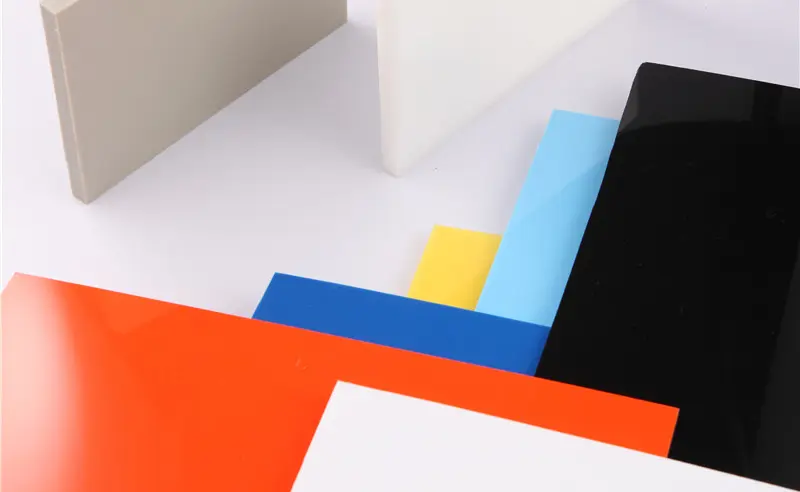ಆಕ್ಟೋ . 11, 2024 04:32 Back to list
Exploring the Benefits and Uses of CPVC Board in Modern Construction
Understanding CPVC Boards Features and Applications
CPVC, or Chlorinated Polyvinyl Chloride, is a type of thermoplastic material that has gained popularity in various applications due to its unique properties and versatility. CPVC boards are increasingly being used in construction, plumbing, and various industrial applications. This article provides a comprehensive overview of CPVC boards, highlighting their features, benefits, and applications in various sectors.
What is CPVC?
CPVC is a modified form of PVC, enhanced through the chlorination process. This modification gives CPVC several advantages over traditional PVC, particularly in terms of temperature resistance and chemical stability. CPVC can withstand higher temperatures, making it suitable for hot water applications. Additionally, it retains excellent corrosion resistance and is less likely to support the growth of bacteria, offering a hygienic solution for various uses.
Properties of CPVC Boards
1. High Temperature Resistance One of the primary attractions of CPVC boards is their ability to withstand temperatures up to 200°F (93°C) without deforming. This makes them an ideal choice for applications involving hot water and steam.
2. Corrosion Resistance CPVC exhibits remarkable resistance to a wide range of chemicals, making it suitable for environments where corrosive substances are present. This durability leads to longer lifespans for products made from CPVC boards.
3. Lightweight Compared to other materials used in construction, such as metal or concrete, CPVC boards are significantly lighter. This property facilitates easier handling, transportation, and installation, thereby reducing labor costs.
4. Ease of Fabrication CPVC boards can be easily cut, shaped, and welded, which allows for greater flexibility in design and application. This adaptability is a significant advantage in both residential and commercial projects.
5. Fire Resistance CPVC is inherently fire-resistant due to its chlorine content. It does not ignite easily and can help to slow the spread of fire, adding an extra layer of safety in construction.
6. Sound Dampening The density of CPVC boards contributes to sound insulation, making them a good choice for construction in places where noise reduction is essential.
cpvc board

Applications of CPVC Boards
1. Plumbing Systems CPVC pipes and boards are widely employed in plumbing systems for transporting hot and cold water due to their temperature resistance and corrosion resistance.
2. Construction In the building industry, CPVC boards are used for wall coverings, roofing, and insulation. Their fire-resistant properties make them suitable for safety-critical areas.
3. Chemical Processing Due to their chemical stability, CPVC boards are often utilized in the manufacturing and storage of chemical products. They can handle a variety of acids, bases, and salts without degrading.
4. Healthcare Facilities The hygienic nature of CPVC boards makes them ideal for use in hospitals and laboratories where cleanliness is paramount. They help in reducing the risk of bacterial contamination.
5. Electrical Applications CPVC boards can also be used to create enclosures and conduits for electrical connections, especially where thermal resistance and non-conductive properties are necessary.
Environmental Considerations
CPVC is seen as an environmentally friendly option compared to other materials. It is recyclable, which helps reduce waste in landfills. Many manufacturers are also focusing on producing CPVC using sustainable practices, ensuring a smaller carbon footprint.
Conclusion
CPVC boards represent an innovative solution that combines versatility with durability, making them a favorite in various industries, from construction to healthcare. Their unique properties, such as high temperature resistance and chemical stability, enable them to perform effectively in demanding environments. As industries continue to evolve, the demand for materials like CPVC boards will likely increase, affirming their significant role in modern applications. With advancements in technology, we can expect to see even more innovative uses of CPVC in the years to come.
-
PVC Transparent Sheet Roll - Durable & Flexible PVC Plastic Sheet Roll for Industrial & Home Use
NewsJun.24,2025
-
High-Quality PVC PPR Pipes and Fittings Durable ERA PPR Solutions
NewsJun.10,2025
-
High-Quality Large HDPE Sheets & Large Diameter PVC Pipe Durable Large PVC Pipe Supplier
NewsJun.10,2025
-
High Density Polyethylene Cutting Board - Durable & Food Safe
NewsJun.09,2025
-
3 Inch PVC Pipe for Durable Irrigation Affordable & Reliable
NewsJun.09,2025
-
Premium PPR Plastic Water Pipe Fittings - Durable & Leak-Free
NewsJun.09,2025

